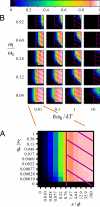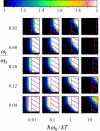Weak, strong, and coherent regimes of Fröhlich condensation and their applications to terahertz medicine and quantum consciousness
- PMID:19251667
- PMCID: PMC2657444
- DOI: 10.1073/pnas.0806273106
Weak, strong, and coherent regimes of Fröhlich condensation and their applications to terahertz medicine and quantum consciousness
Abstract
In 1968, Fröhlich showed that a driven set of oscillators can condense with nearly all of the supplied energy activating the vibrational mode of lowest frequency. This is a remarkable property usually compared with Bose-Einstein condensation, superconductivity, lasing, and other unique phenomena involving macroscopic quantum coherence. However, despite intense research, no unambiguous example has been documented. We determine the most likely experimental signatures of Fröhlich condensation and show that they are significant features remote from the extraordinary properties normally envisaged. Fröhlich condensates are classified into 3 types: weak condensates in which profound effects on chemical kinetics are possible, strong condensates in which an extremely large amount of energy is channeled into 1 vibrational mode, and coherent condensates in which this energy is placed in a single quantum state. Coherent condensates are shown to involve extremely large energies, to not be produced by the Wu-Austin dynamical Hamiltonian that provides the simplest depiction of Fröhlich condensates formed using mechanically supplied energy, and to be extremely fragile. They are inaccessible in a biological environment. Hence the Penrose-Hameroff orchestrated objective-reduction model and related theories for cognitive function that embody coherent Fröhlich condensation as an essential element are untenable. Weak condensates, however, may have profound effects on chemical and enzyme kinetics, and may be produced from biochemical energy or from radio frequency, microwave, or terahertz radiation. Pokorný's observed 8.085-MHz microtubulin resonance is identified as a possible candidate, with microwave reactors (green chemistry) and terahertz medicine appearing as other feasible sources.
Conflict of interest statement
The authors declare no conflict of interest.
Figures




References
- Fröhlich H. Long-range coherence and energy storage in biological systems. Int J Quantum Chem. 1968;2:641–649.
- Fröhlich H. Bose condensation of strongly excited longitudinal electric modes. Phys Lett A. 1968;26:402–403.
- Fröhlich H. Long range coherence and the action of enzymes. Nature. 1970;228:1093. - PubMed
- Sewell GL. Quantum macrostatistical theory of nonequilibrium steady states. Rev Math Phys. 2005;17:977–1020.
- Miller PF, Gebbie HA. Laboratory millimeter wave measurements of atmospheric aerosols. Int J Infrared Millimeter Waves. 1996;17:1573–1591.
Publication types
MeSH terms
Substances
LinkOut - more resources
Full Text Sources
